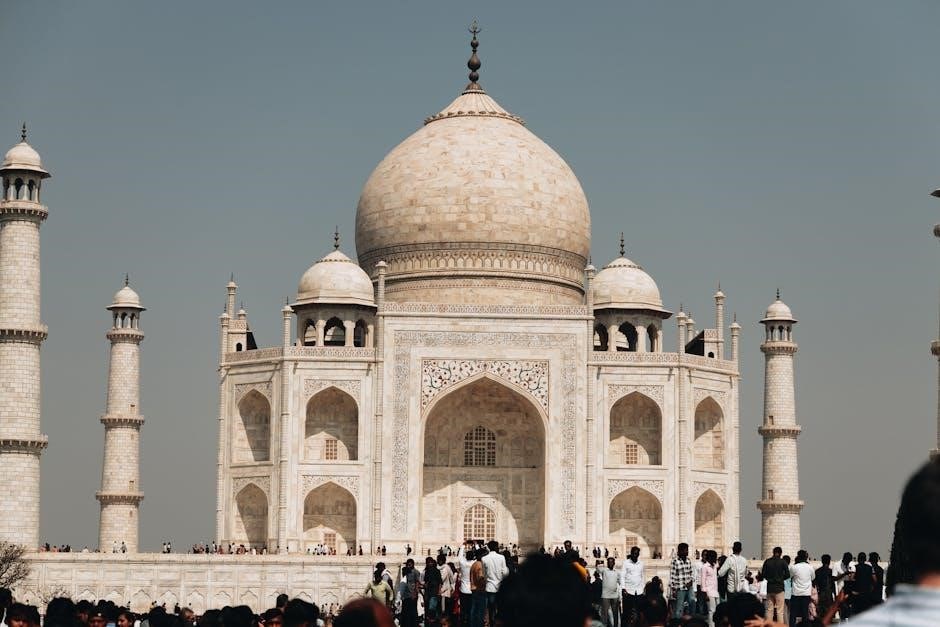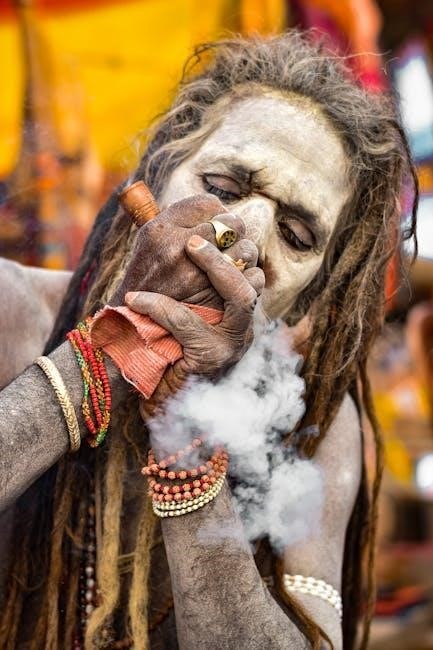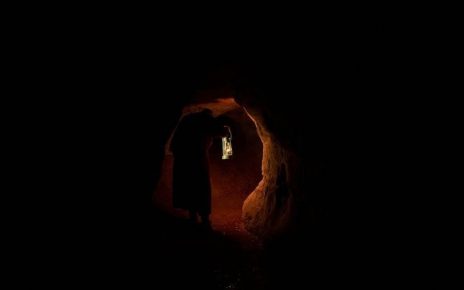Origin and History of Y-Indian Guides
Founded in 1926 by Harold Keltner and Joe Friday, an Ojibwe Native American, the Y-Indian Guides began in Richmond Heights, MO, aiming to strengthen father-son bonds through outdoor activities and cultural themes, gaining national recognition in 1935;
1.1 Founders and Their Vision
Harold Keltner, a St. Louis YMCA director, and Joe Friday, an Ojibwe Native American, co-founded the Y-Indian Guides in 1926. Keltner, inspired by Friday’s stories about Indigenous father-son relationships, envisioned a program to strengthen family bonds. Friday, a skilled outdoorsman, shared his knowledge of nature and Indigenous traditions, shaping the program’s cultural foundation. Their collaboration aimed to foster parent-child connections through outdoor activities and mutual respect for Indigenous heritage, laying the groundwork for a unique and impactful family program.
1.2 The First Tribe and Early Development
The first Y-Indian Guides tribe was established in 1926 in Richmond Heights, Missouri, with fathers and sons participating in outdoor activities and cultural events. Inspired by Joe Friday’s Indigenous wisdom, the program emphasized camping, craft-making, and storytelling. This initial tribe set the foundation for the program’s growth, blending outdoor adventures with cultural themes. The early success of this first group paved the way for national recognition and expansion, solidifying the program’s unique approach to family bonding and cultural enrichment.
1.3 National Recognition in 1935
In 1935, the Y-Indian Guides gained national recognition as an official YMCA program, marking a significant milestone in its expansion. The program’s popularity soared, with thousands of tribes forming across the U.S. by the 1960s. This growth was fueled by its unique blend of outdoor adventures, cultural themes, and family bonding, making it a cornerstone of YMCA youth programming for decades.

Mission and Objectives of the Program
The program aimed to foster strong family bonds, promote outdoor activities, teach life skills, and encourage cultural awareness, enriching parent-child relationships through shared experiences and mutual respect.
2.1 Father-Child Bonding Through Outdoor Activities
Outdoor activities were central to the Y-Indian Guides, fostering deep connections between fathers and children. Camping, fishing, and hiking encouraged shared experiences, mutual respect, and lifelong memories. The program emphasized hands-on learning, teaching survival skills and teamwork while immersing families in nature. By participating in these activities, parents and children strengthened their bond, creating a foundation for trust and understanding. The outdoor setting also promoted a sense of adventure and camaraderie, reflecting the program’s commitment to family unity and personal growth.
2.2 Teaching Life Skills and Outdoor Survival
Central to the Y-Indian Guides program was the teaching of life skills and outdoor survival techniques. Fathers and children learned camping, canoeing, and tracking, fostering self-reliance and teamwork. These activities, inspired by Indigenous traditions, emphasized hands-on learning and trust-building. The program aimed to prepare children for life’s challenges while strengthening family bonds through shared achievements. This focus on practical skills and mutual support became a cornerstone of the program’s enduring legacy.
2.3 Promoting Indigenous Cultural Awareness
The Y-Indian Guides program aimed to promote Indigenous cultural awareness by incorporating Native American themes, stories, and traditions into its activities. Fathers and children participated in rituals, storytelling, and crafts inspired by Indigenous cultures. While the program sought to foster appreciation for Native American heritage, critics argued it often relied on stereotypes and appropriation. Despite this, the initiative introduced many to Indigenous traditions, sparking curiosity and dialogue about Native American history and contributions;

Structure and Programs
The Y-Indian Guides offered three main programs: Father-Son Y-Indian Guides, Father-Daughter Y-Indian Princesses, and the Co-Ed Y-Trailblazers, each fostering family bonding through outdoor activities and shared experiences.
3.1 Father-Son Y-Indian Guides
The Father-Son Y-Indian Guides, initiated in 1926 by Harold Keltner and Joe Friday, focused on strengthening father-son relationships through outdoor activities like camping, fishing, and hiking. The program incorporated Native American cultural themes, with participants adopting tribal names and participating in mock ceremonies. It emphasized bonding, teamwork, and skill-building, while fostering a sense of adventure and respect for nature. This program laid the foundation for the broader Y-Indian Guides movement, inspiring similar initiatives for daughters and co-ed groups.
3.2 Father-Daughter Y-Indian Princesses
Introduced in 1954, the Father-Daughter Y-Indian Princesses program aimed to strengthen parent-child bonds through shared outdoor experiences. Activities included camping, arts and crafts, and cultural events, fostering mutual respect and understanding. The program mirrored the Father-Son Y-Indian Guides, emphasizing teamwork and nature appreciation. It provided a unique space for fathers and daughters to connect, blending adventure with cultural themes, and became a popular component of the Y-Indian Guides movement.
3.3 Co-Ed Y-Trailblazers Program
Introduced in the 1960s, the Y-Trailblazers program expanded the Y-Indian Guides to include co-ed activities, targeting older children and their parents. It emphasized outdoor adventures, camping, and community service, fostering teamwork and leadership. The program marked a shift toward inclusivity, allowing both boys and girls to participate. By blending traditional themes with modern family dynamics, Y-Trailblazers provided a dynamic way for families to bond while exploring nature and cultural heritage, adapting to evolving societal needs.

Evolution Over Time
Since its 1926 inception, the Y-Indian Guides expanded from father-son programs to include father-daughter groups in 1954 and co-ed activities in the 1960s. The 2003 rebranding to Y-Adventure Guides and the emergence of independent groups like Yomechas Federation in 2010 highlighted its evolution in addressing contemporary family dynamics while retaining its original mission of fostering relationships through shared outdoor experiences.
4.1 Expansion and Growth in the 1960s
The 1960s marked significant growth for Y-Indian Guides, with the introduction of co-ed programs like Y-Trailblazers and father-daughter groups. By this time, over 30,000 tribes across nearly 900 YMCAs were active, engaging in camping, fishing, and community service. This era saw the program’s peak, with structured activities fostering fellowship and outdoor bonding, making it a national phenomenon that emphasized family relationships and cultural exploration.
4.2 Rebranding to Y-Adventure Guides
In 2003, the YMCA rebranded Y-Indian Guides to Y-Adventure Guides, aiming to address cultural sensitivities and criticism over Native American imagery. The change reflected shifting societal attitudes toward cultural appropriation. While the program retained its focus on family bonding and outdoor activities, the rebranding marked a departure from its Indigenous-inspired roots. This transition also led to a decline in participation, as some groups preferred the original Native American theme, prompting independent organizations to preserve the traditional format.
4.4 Adaptation to Modern Family Needs
The Y-Indian Guides evolved to meet changing family dynamics, introducing programs like Y-Papoose for preschoolers and expanding co-ed options. Recognizing diverse family structures, the program became more inclusive, allowing mothers and daughters to participate. While maintaining its outdoor and bonding focus, it adapted to modern sensitivities, reducing Native American imagery. This flexibility ensured relevance, offering families varied ways to connect while respecting cultural concerns and fostering community engagement through shared activities like camping and crafts.

Cultural Impact and Criticisms
The Y-Indian Guides fostered father-child bonding but faced criticism for appropriating Indigenous cultures, promoting stereotypes, and misrepresenting Native American traditions, sparking debates about cultural sensitivity.
5.1 Appropriation of Indigenous Cultures
The Y-Indian Guides program faced criticism for appropriating Indigenous cultures, using Native American imagery, rituals, and regalia without proper understanding or permission. It stereotyped Indigenous peoples as primitive, reinforcing harmful notions of Native Americans as “chiefs” or “braves.” The program’s use of Indigenous traditions for father-child bonding ignored the diversity and richness of Native cultures, leading to accusations of cultural misrepresentation and exploitation. This appropriation sparked widespread controversy and calls for greater cultural sensitivity.
5.2 Stereotypical Portrayals of Native Americans
The Y-Indian Guides program was criticized for perpetuating stereotypical portrayals of Native Americans, often reducing them to simplistic images of “chiefs” or “braves.” The use of headdresses, face paint, and tribal names reinforced romanticized and inaccurate notions of Indigenous cultures. These portrayals ignored the diversity and complexity of Native American communities, fostering a narrow and misleading understanding of their traditions and histories. This contributed to the marginalization of Native American voices and the perpetuation of harmful stereotypes in mainstream culture.
5.3 Efforts to Respect Indigenous Traditions
Some modern groups, like Yomechas Federation, strive to honor Indigenous cultures by incorporating authentic traditions and consulting with Native American advisors. These efforts aim to move beyond stereotypes and foster genuine respect for Indigenous heritage. Programs now emphasize cultural sensitivity, encouraging participants to learn about the rich diversity of Native American communities. This shift reflects a growing commitment to meaningful representation and education, ensuring that the program’s cultural elements are appreciated thoughtfully rather than appropriated carelessly.

Legacy and Modern-Day Relevance
The Y-Indian Guides legacy endures through evolved programs like Y-Adventure Guides, emphasizing family bonding and outdoor experiences. Independent groups like Yomechas Federation continue the tradition, adapting to modern values while honoring its origins.
6.1 Independent Groups and Their Contributions
Independent groups like Yomechas Federation have preserved the Y-Indian Guides’ spirit, disassociating from the YMCA in 2010 to maintain the Native American theme. These groups continue to foster family bonding through outdoor activities, honoring Indigenous traditions while adapting to modern sensitivities. They contribute to cultural awareness and community building, ensuring the program’s legacy endures. Their efforts highlight the enduring value of the original vision, keeping it relevant for new generations.
6.2 Continued Focus on Family Relationships
The Y-Indian Guides’ core mission has always centered on nurturing family relationships. By emphasizing shared outdoor experiences, the program fosters deep connections between parents and children. Activities like camping, hiking, and cultural events provide opportunities for meaningful bonding. The program’s evolution has maintained this focus, adapting to include mothers and daughters while keeping the essence of quality time together. This enduring emphasis on family togetherness remains a cornerstone of its legacy and appeal.

6.3 Balance Between Tradition and Sensitivity
The Y-Indian Guides have sought to balance preserving their original cultural themes with growing sensitivity toward Indigenous cultures. While some groups maintain Native American traditions, others have adapted to avoid appropriation. Independent organizations like Yomechas Federation strive to honor Indigenous heritage respectfully, fostering cultural awareness without stereotyping. This balance reflects a modern approach to maintaining the program’s original intent while addressing historical criticisms, ensuring reverence for Indigenous traditions in family bonding activities.



